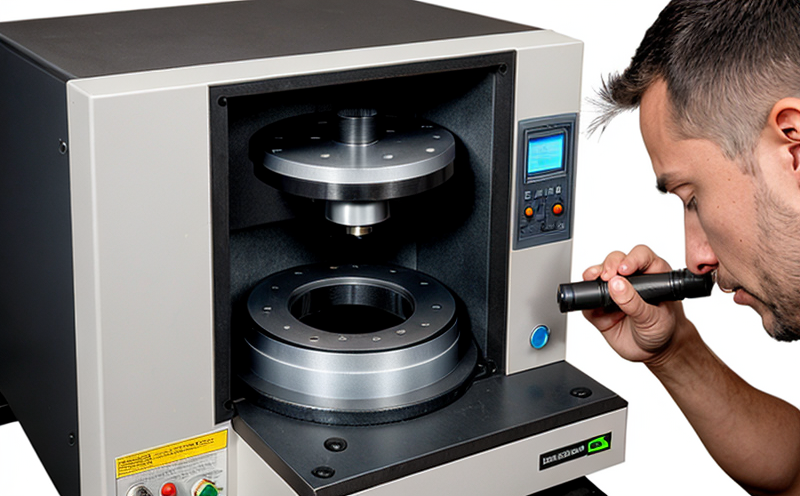ASTM B657 Metallography of Hardmetals and Carbides
The ASTM B657 standard provides a comprehensive framework to evaluate the microstructure characteristics of hardmetals and carbides, which are critical materials used in industries such as aerospace, automotive, and manufacturing. This testing ensures that these materials meet stringent quality standards for performance, reliability, and durability.
Hardmetals and carbides are known for their exceptional hardness, wear resistance, and thermal stability. They find applications in cutting tools, dies, molds, and other high-stress components where traditional metal alloys fall short. The microstructure of these materials can significantly impact their performance under various conditions. By using ASTM B657, manufacturers can ensure that the internal structure aligns with expected properties and complies with industry standards.
Microstructural analysis is particularly important for hardmetals and carbides as they often exhibit complex phases such as cementite, graphite, or other carbide forms. These structures influence the material's mechanical behavior, including hardness, toughness, and wear resistance. The ASTM B657 test helps identify these microstructural features and assess their uniformity across specimens.
The testing procedure involves several stages: sample preparation, mounting, sectioning, polishing, etching, and final examination under a metallographic microscope. This meticulous process ensures that the microstructure is accurately represented for evaluation. The standard specifies detailed steps to minimize distortions and ensure consistent results.
Understanding the microstructure is essential for quality control, product development, and ensuring compliance with regulatory requirements. For instance, in aerospace applications, the integrity of hardmetals used in engine components must be verified to prevent failures that could have catastrophic consequences. Similarly, in manufacturing industries, the durability of cutting tools depends on their internal structure.
ASTM B657 is widely recognized for its reliability and consistency across different laboratories and operators. This standard ensures that microstructural assessments are repeatable and comparable, which is crucial for quality assurance processes.
Why It Matters
The importance of ASTM B657 metallography testing cannot be overstated in the context of hardmetals and carbides. These materials are integral to numerous high-performance applications where reliability, durability, and precision are paramount.
- Aerospace Industry: Ensures that critical components like engine parts have a consistent microstructure to prevent failure under extreme conditions.
- Metal Cutting Tools: Guarantees the integrity of cutting edges by verifying their hardness and wear resistance, extending tool life and improving efficiency.
- Dies & Molds: Helps in maintaining high precision and longevity in manufacturing processes, which is crucial for producing high-quality parts.
The microstructure examination through ASTM B657 provides insights into the material's performance characteristics. This information is invaluable for research and development teams as they strive to improve existing materials or develop new alloys that meet increasingly stringent industry demands.
Scope and Methodology
| Aspect | Description |
|---|---|
| Sample Preparation | Involves cleaning, mounting, sectioning, polishing, and etching to reveal the internal structure. |
| Metallographic Examination | Utilizes optical microscopes with various magnification levels for detailed observation of phases and structures. |
| Standardization | Ensures that all tests are conducted under controlled conditions to maintain consistency in results. |
The ASTM B657 standard outlines a structured approach to ensure accurate microstructural analysis. The process begins with careful sample preparation, which involves cleaning the specimen thoroughly and mounting it for sectioning. Sectioning is followed by extensive polishing and etching processes that prepare the surface for optimal visualization under the microscope.
During metallographic examination, experienced technicians use optical microscopes capable of high magnification to observe and document the microstructure features. The standard specifies the criteria for acceptable images, including resolution, contrast, and clarity.
Why Choose This Test
- Regulatory Compliance: Ensures adherence to industry standards like ASTM B657, which is critical for meeting regulatory requirements.
- Quality Assurance: Provides a robust framework for quality control by identifying deviations from expected microstructures early in the production process.
- Innovation Support: Facilitates research and development efforts by offering detailed insights into material behavior under various conditions.
- Consistency: Ensures that all samples are examined under standardized conditions, leading to consistent results across different batches or suppliers.
- Risk Mitigation: Helps in minimizing the risk of using substandard materials by identifying defects and inconsistencies early.
- Cost Efficiency: By catching issues early, this test can save significant costs associated with rework or scrap due to material failures.
The ASTM B657 metallography test is an essential tool for maintaining high standards in the production and use of hardmetals and carbides. It supports various industries by ensuring that materials meet stringent quality criteria, leading to safer and more reliable products.





